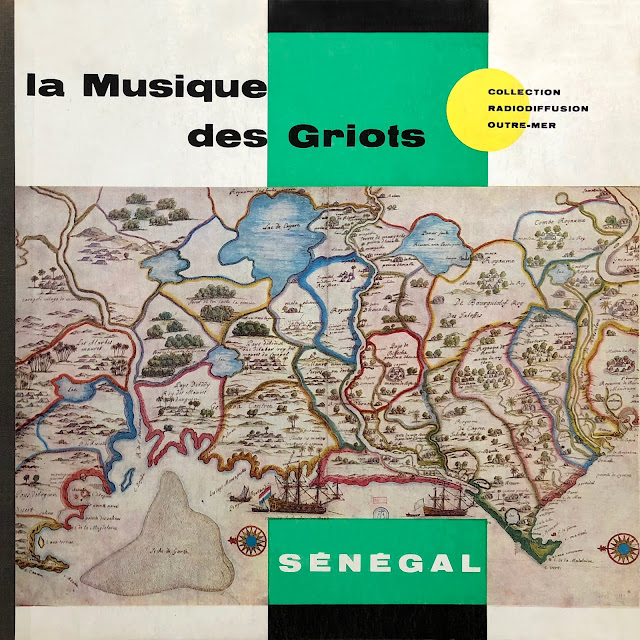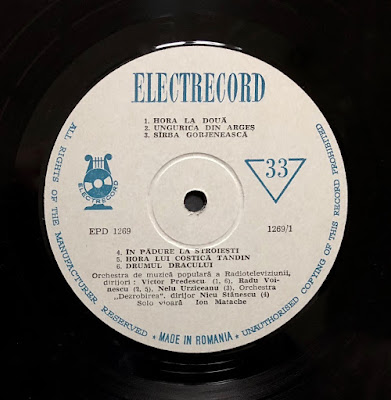La Musique des Griots – Ocora OCR 15, recorded by T. Nikiprowetzky, 1965 (LP)


This excellent record from Ocora’s legendary first series captures authentic griot music recorded in different parts of Senegal. Griots play a major role in West African cultures and societies by passing down the oral tradition and history, as well as music and poetry. Griots’ unparalleled musicianship, knowledge, storytelling, charisma and praise singing are an essential part of Senegalese celebrations and ceremonies.
These bards, who hail from a special caste of musicians, are also seen as being outside society, paradoxically both despised and greatly feared for their eloquence and wit and their purported occult powers.
The LP includes Soundioulou Sissoko (1921-1994) (A1), one of the most celebrated Senegalese kora players of the 20th century (like Lalo Keba Drame, whom we showcased in a previous post); kora and singing (A2); drumming (A3, A10, A11); gourd playing (A4, B5, B6); women singing and drumming (A5); one-string bowed violin (A6); men singing (A7-A8); xalam luth (A9, B7, B8); and singer Mariam Kouyate (B1).
The LP includes Soundioulou Sissoko (1921-1994) (A1), one of the most celebrated Senegalese kora players of the 20th century (like Lalo Keba Drame, whom we showcased in a previous post); kora and singing (A2); drumming (A3, A10, A11); gourd playing (A4, B5, B6); women singing and drumming (A5); one-string bowed violin (A6); men singing (A7-A8); xalam luth (A9, B7, B8); and singer Mariam Kouyate (B1).
Cet excellent disque – issu de la première série légendaire d’Ocora – présente une authentique musique de griot enregistrée dans différentes régions du Sénégal. Les griots jouent un rôle essentiel dans les cultures et les sociétés ouest-africaines à travers la transmission orale de la tradition et de l'histoire, ainsi que de la musique et de la poésie. Leur virtuosité, leur culture, leurs récits, leur charisme et leurs louanges sont indispensables aux célébrations, comme les marriages, et aux cérémonies.
Ces bardes dépositaires de la tradition, qui appartiennent à une caste de musiciens, sont également perçus comme étant en dehors de la société, paradoxalement à la fois méprisés et redoutés pour leur éloquence, leur maîtrise des proverbes et des paraboles et pour leurs pouvoirs occultes supposés.
Ces bardes dépositaires de la tradition, qui appartiennent à une caste de musiciens, sont également perçus comme étant en dehors de la société, paradoxalement à la fois méprisés et redoutés pour leur éloquence, leur maîtrise des proverbes et des paraboles et pour leurs pouvoirs occultes supposés.
Le disque comprend notamment Soundioulou Sissoko (1921-1994) (A1), l’un des plus célèbres joueurs de cora sénégalais du XXe siècle (tout comme Lalo Keba Drame, que nous avons présenté dans un précédent post); de la cora et du chant (A2); des percussions (A3, A10, A11); un jeu de gourdes (A4, B5, B6); des chants de femmes et des percussions (A5); de la vièle à une corde (A6); des chants d’hommes (A7-A8); du luth xalam (A9, B7, B8); et la voix de la "diva" Mariam Kouyaté (B1).
Download
The excellent French Ocora label broadcasts a World Music web radio featuring a selection of traditional musics from their remarkable and vast catalog, and more here.





































